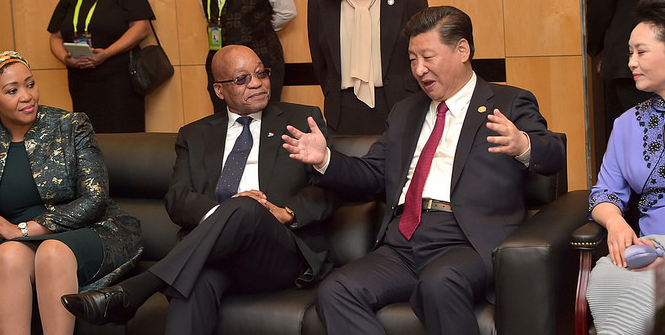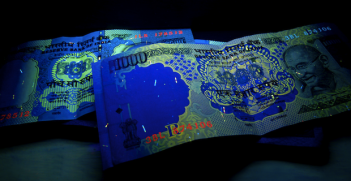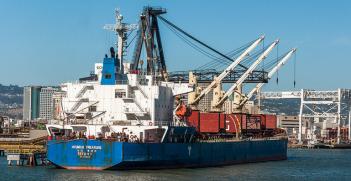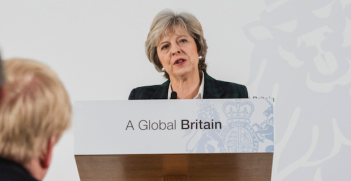China-Africa Economic Integration: Striving for Common Development

This month in South Africa’s commercial heartland of Johannesburg, co-hosts of the triennial head of state Forum on China-Africa Cooperation (FOCAC), Presidents Zuma of South Africa and Xi Jinping of China, convened some fifty African heads of state under the theme “Africa-China Progressing Together: Win-Win Cooperation for Common Development”.
China’s offer of $60bn to advance mutual economic interests made the headlines, as did news of more Chinese scholarships for African students to study in China and selective debt relief for very poor African countries. An explicit push to integrate Africa into Chinese industrial value chains may boost growth in both China and African countries, and more seminally mean the 2015 Summit comes to mark a turning point in the broader China-led integration of Africa into the global economy.
However, this process has increasingly global features as other international investors also go in search of rising opportunity in Africa, including being able to take over contracts that Chinese investors fail to implement to satisfaction.
China-Africa industrial integration: a tale of two populations
Drivers of China’s recent three-decade growth miracle were primarily high and rapidly increasing investment levels and ever more export-oriented industrial activity. Importantly, these trends were supported by a steady flow of workers transferring from informal rural employment to more formal urban employment.
That process is captured in economics in the Lewis Model, and produces large productivity gains – until those rural workers dry up, when labour becomes relatively scarce and wages rise rapidly. In turn, China’s labour-intensive exports rise in cost, helping to drive low-end manufacturers to low-wage frontiers abroad.
That sub-Saharan Africa (SSA) sits at the potential dawn of its own demographic dividend places it favourably as one of those destinations. In SSA’s case, recent high fertility and falling child mortality rates are producing a windfall working age workforce proportion.
In China by comparison, recent falls in fertility rates are instead producing a rising dependency ratio – an increasing share of dependent old and young as a share of the total population. The latter requires a higher productivity per worker to produce the same rate of national output per person – where SSA is theoretically poised to enjoy the high returns associated with demographic dividend.
Faced with a tighter labour market at home, Chinese investors are lining up in the hope of capturing those gains. By some estimates, Africa’s formal workforce will be almost half a billion strong by mid-century. In earlier decades, infrastructure, governance and especially security bottlenecks slowed Africa’s growth. Today Africa is home to many of the world’s fastest-growing economies, with fewer countries and people held back by civil disorder and war and in general experiencing less civil volatility.
In his opening speech at FOCAC, Chinese President Xi Jinping quoted average annual growth in Africa of nearly 5 percent. Moreover, in light of these growth and demographic trends China’s most renowned economist, Justin Lin, is open in regarding Africa as a solution to China’s wage inflation challenge.
Closing the infrastructure and talent gaps
The World Bank estimates Africa’s infrastructure financing requirement to be some US $38bn annually, with a further US $37bn required annually in operations and maintenance. The sum is the equivalent of 12 percent of Africa’s GDP, the funding gap for which is estimated at US $35bn. Power supply presents a particularly large gap, with the 48 countries of SSA, home to some 800 million persons, presently generating around the same amount of power as Spain, which has a population of 45 million.
The African Development Bank estimates that these gaps reduce African GDP by some 2 percent annually. With millions of new workers entering the labour market over the coming decade, the human cost of low growth may be far higher.
Closing Africa’s infrastructure gap is a priority for unlocking that growth potential via building more integrated regional markets and connecting power networks. China’s depth of infrastructure and related industrial capacity – now in excess thanks to the country’s own changing economic structure – is complementary to Africa’s needs. China offers an array of funding mechanisms and has pledged to help Africa to build the “three major networks” – railway, road and regional aviation.
Amid political will, these infrastructure plans face a new hurdle. In recent years, such projects were commonly funded by the exchange of resources for Chinese-built infrastructure, an arrangement known as “Angola terms”. With commodity prices now in the doldrums, innovative thinking around financing will be needed for realising the goal of closing the infrastructure gap.
Similarly, Chinese educators and infrastructure companies and African governments must also be hard-nosed around quality expectations. In December 2013 Botswana’s government refused to renew China National Electric Equipment Company’s operation and maintenance contract and instead handed this to German company STEAG Energy Services.
Thanks to the Millennium Development Goals, since the mid-1990s the prioritising of primary school education spending among donor countries has raised the proportion of children finishing primary school to 69.1 percent in 2013, against less than half in the mid-1970s. In this light, China has chosen a complementary focus on higher education and professional skill development by increasing government scholarships for African students to 6,000 in 2015, the win-win in which is that these students are helping to internationalise Chinese universities.
At this year’s FOCAC, China announced an unquantified number of regional vocational training centres and “capacity-building colleges”, as well as a pledge to provide vocational training and education to some 200,000 Africans. Sino-Africa expert Deborah Brautigam cited a case in Ethiopia where China shipping trainers to Africa did not work with ideal efficiency. At that technical college Ethiopia chose to replace Chinese trainers with German trainers.
China-Africa ties in broader international context
A final and subtle observation I make as an outsider observe to this year’s FOCAC is that it appears to have been more a case of China-in-Africa as compared to China-as-not-the-West in Africa. Early in Xi’s speech he stated that China’s industrialisation was spurred by the need to defend China from invading Western forces over a century ago. Later in his speech he noted that both China and African nations could learn from the reference provided by developed countries.
It seems now however that China’s ideological positioning appears to be less juxtaposing itself as a counterpoint to the West, and rather about more directly positioning itself as China – the world’s largest and relatively industrialised developing country. The world’s largest manufacturer, China is also now home to excess industrial capacity, a diminishing workforce share, and the end of its three-decade run of double-digit growth.
Where and how those structural changes in China can morph into investor returns for China and developmental gains for African nations – and the capture of next generation demographic dividend – depends on China, on Africa and less directly also on as the voracious competitiveness of international investors more generally.
Dr Lauren Johnston is a McKenzie Postdoctoral Fellow at the Melbourne Institute of Applied Economic and Social Research. This article can be republished under a Creative Commons License.





